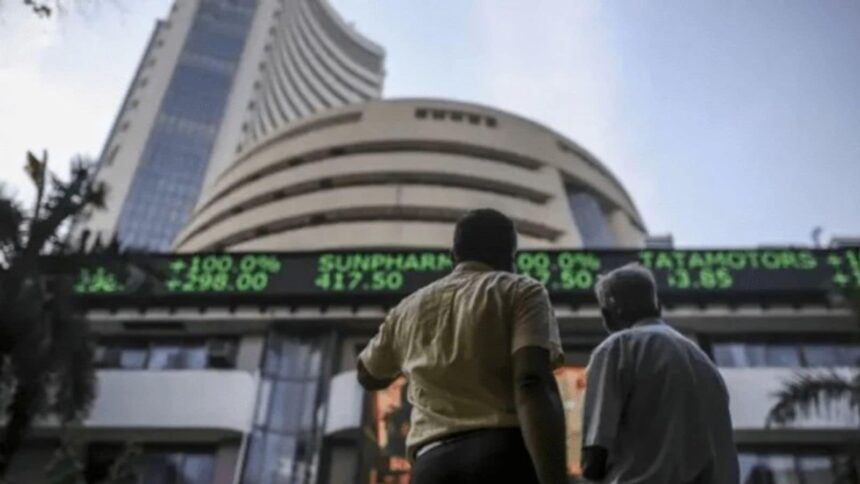Led by Reliance Industries (RIL) shares, domestic stock markets on Monday rallied by 1.3 per cent on a revival in buying by foreign portfolio investors (FPIs) and firm trend in other global markets. The Sensex gained 1,081 points, or 1.35 per cent, at 80,279.02 and the NSE Nifty index rose 307 points, or 1.28 per cent, at 24,346.20 amid the buying euphoria at around 1.15 pm IST.
The rally was led by energy (up by 2.96 per cent) and oil & gas companies (2.89 per cent gain) with RIL shares in the forefront. The Mid-cap index rose by 1.13 per cent.
RIL shares jumped by 5.29 per cent to Rs 1368.80 on the back of heavy buying after the company announced better than expected financial results for the March 2025 quarter. Despite a challenging global business environment, Reliance Industries on Friday reported a 6.4 per cent rise in consolidated net profit at Rs 22,611 crore for the quarter ended March 2025 as against Rs 21,243 crore in the same period of last year. The net profit attributable to the owners of the company was at Rs 19,407 crore for the March quarter as against Rs 18,951 crore a year ago, showing a rise of 2.40 per cent.
The board of directors of the company also declared a dividend of Rs 5.5 per share for the year. The FY2025 revenue of the company was Rs 10.71 lakh crore and profit rose 2.9 per cent at Rs 81,309 crore. RIL has also become the first company to have a networth of over Rs 10 lakh crore.
Other Asian markets also made gains on Monday while the dollar dithered as confusion over the US trade policy showed little sign of easing, in a week packed with major economic data and mega-tech earnings. US stock markets rallied significantly last week, with all major indices posting substantial weekly gains as reports suggested easing trade tensions between the US and China. Potential agreements with other trading partners further bolstered market sentiment. The Nasdaq Composite led with a 6.7% surge, powered by tech giants Nvidia and Alphabet, while the S&P 500 rose 4.6% and the Dow Jones Industrial Average gained 2.5%.
Analysts said there is a distinct trend reversal in FPI strategy in India. During the last eight days FPIs were sustained buyers in the Indian market. The cumulative buy figure through the exchanges during this eight-day period is Rs 32,465 crore. “An interesting point in this reversal of FPI strategy is that it has happened at a time of heightened India-Pak tensions following the Pahalgam terror attacks,” said an analyst.
FPI flows into India have happened, ignoring the serious geopolitical tensions. The sustained rise in dollar which triggered the momentum trade towards US equities has reversed with the dollar index falling from a peak of 111 in mid-January this year to around 99 now. The steep decline in US growth expected this year will impact corporate earnings in US while the Indian economy will continue to remain resilient with growth of above 6% accompanied by recovery in corporate earnings.
Despite this upswing, investor caution persisted as President Trump’s administration continued demanding substantial concessions from China, tempering expectations for a quick resolution to trade disputes.
Analysts are of the view that the Trump administration’s unconventional approach across a range of policy areas will probably cause some longer-lasting damage to confidence in the US as a safe haven. The US dollar is still hostage to the administration’s whims, said an analyst.
Geopolitical tensions between India and Pakistan continue to weigh on sentiments. Forecasting possible geo-political flashpoints or accurately assessing their cascading repercussions globally is challenging. Rather than attempting to predict the unpredictable, a more prudent approach is strategic preparation. For investors, this translates to building resilience within their portfolios to withstand potential geopolitical shocks and avoiding overly speculative positions based on uncertain outcomes.
Analysts said maintaining adequate liquidity is vital for the financial markets. This allows flexibility to either capitalise on distressed asset opportunities that may arise during turmoil or to navigate adverse market conditions effectively, providing a buffer against unforeseen eventualities.








